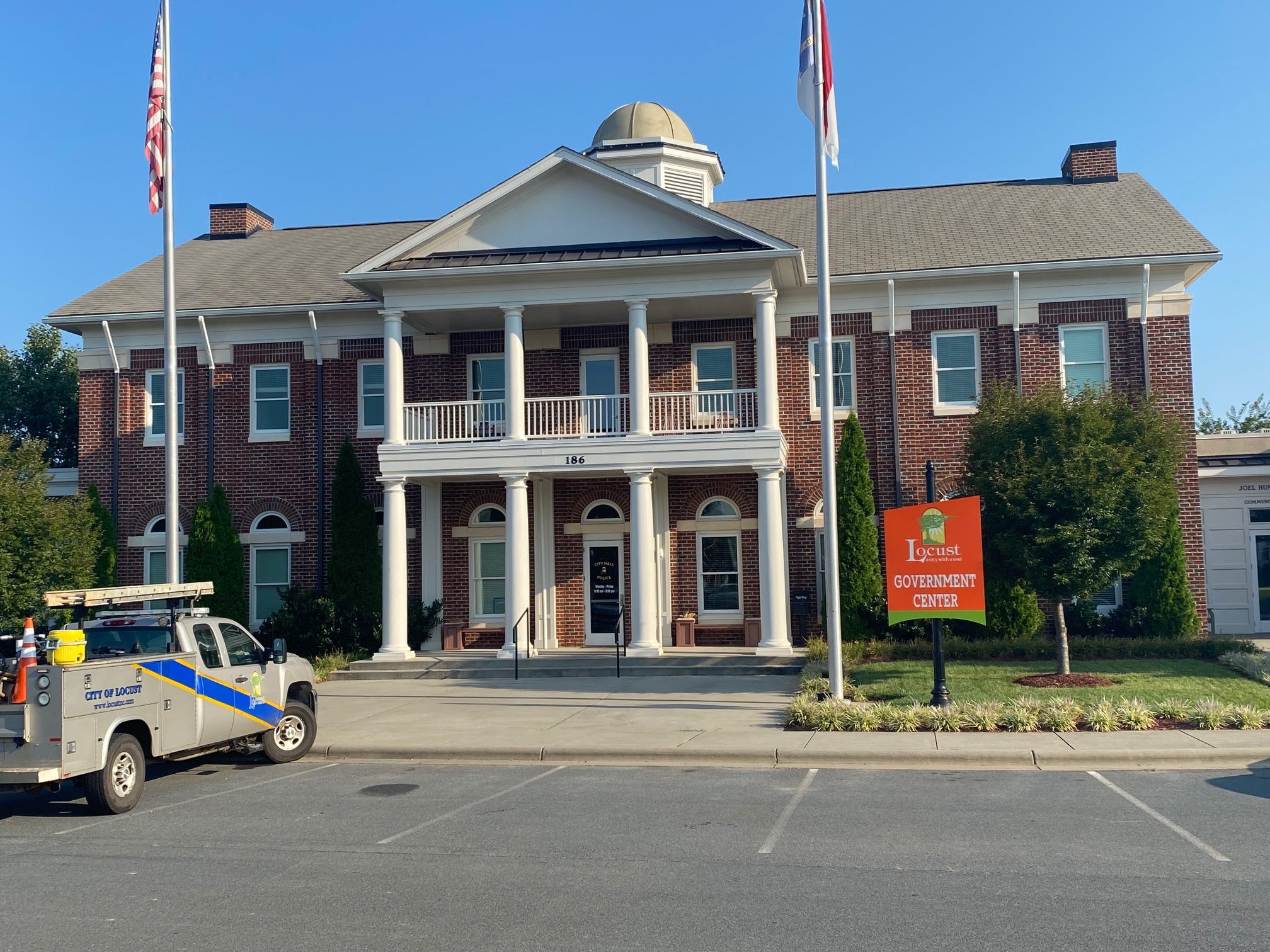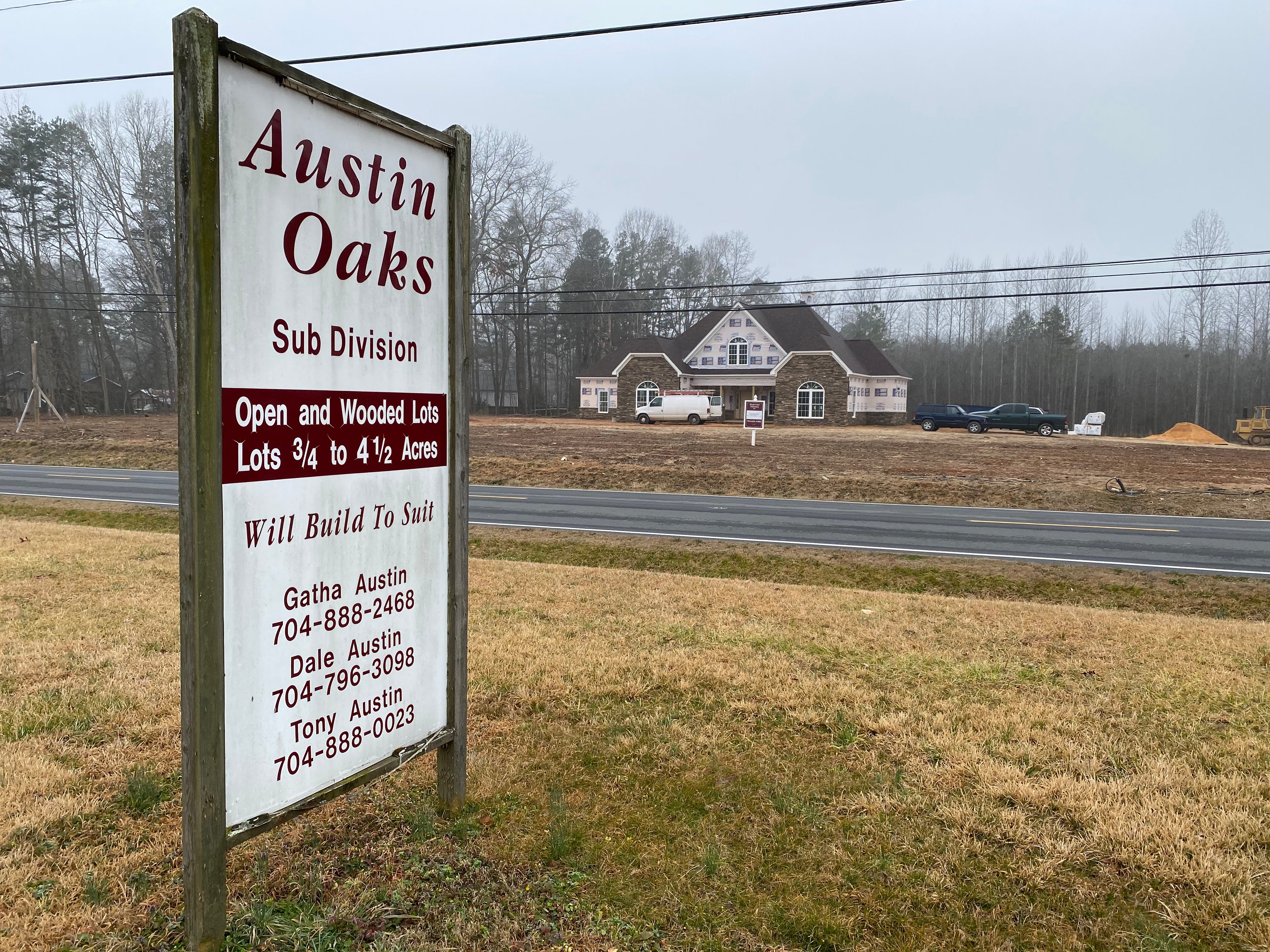County’s growth over last decade attributed largely to influx of people in Locust, other western municipalities
Published 9:55 am Monday, September 20, 2021

- Homes are being built all across the western portion of Stanly County including Locust Town Center.
|
Getting your Trinity Audio player ready...
|
During the mid-1990s, Locust had less than 2,400 people, including only two city employees and a small police force. But city leaders knew Locust was well-positioned for growth in the near future due to its close proximity to Charlotte. To help prepare for the influx of people, officials came together and began crafting a comprehensive, long-range land use plan.
A roughly 30-person committee worked on the detailed plan, which included things like how zoning should look, how the city should grow and where the growth should occur, according to County Planning Director Bob Remsburg.
Remsburg, as a city councilman, served on the committee. He later was city administrator from 1999 until 2004, when the growth really began to take effect.
The city’s plan, which was completed in the early 2000s, helped catch the eye of several Charlotte developers, who helped play a role in transforming Locust, including the eventual construction of the Locust Town Center, said Remsburg, who still lives in Locust.

Locust Town Center, which was built in the early 2000s, includes many shops and restaurants along with city hall.
Locust’s growth has exploded in the years since the plan was enacted — especially over the past decade.
The city increased its population by about 55 percent over the past decade, from 2,930 to 4,537, new census data show, far outpacing the gains made by every other Stanly County municipality.
The surge of new people moving into the city was not a surprise to City Administrator Cesar Correa, who anticipated a big increase. If anything, he said, he expected Locust to actually surpass 5,000 people.
“I’m actually surprised that it wasn’t higher,” he said about the city’s growth.
Compared to 20 years ago, Locust’s growth is even more impressive. The city increased its population by about 88 percent since 2000, when there was about 2,400 residents.
The city’s growth has not just occurred in a vacuum, as it compares well to most other municipalities outside of Stanly.
Locust had the fourth fastest growing population in the Charlotte metro region, behind only Waxhaw (108 percent), Harrisburg (67 percent), and Troutman (56 percent), according to Correa. He noted the city is also the 39th fastest growing population in North Carolina, which has around 530 municipalities.
Albemarle still has almost four times the population of Locust, it sits at about 16,430 people, but it only grew at a more modest three percent over the last 10 years.
As Locust continues to build subdivisions and break ground on new businesses, the growth was likely expected for many residents. Just this summer, the owners of The Local Room announced they are opening a brewery across from city hall next year. Several big-name fast food chains, including Starbucks, Arby’s, Burger King and Jersey Mike’s, are also coming to Locust in the near future.
“The old part of me says it’s sad that I don’t know most of the people in Locust anymore,” Remsburg said. “On the other hand, we’ve added a lot of wonderful people and a lot of wonderful businesses and activities.”
Expansion across western Stanly
The influx of people to Locust, though, is part of a larger pattern of growth that has occurred over the past decade in the county. The top three fastest growing municipalities in Stanly are all located in the western end of the county, which should come as no surprise considering their proximity to Charlotte, which saw its population grow by more than 100,000.
Aside from Locust, Oakboro’s population grew by 15 percent from 1,860 to 2,128 while Stanfield increased by seven percent, from 1,486 to 1,585. Red Cross increased its population by almost three percent.
As a whole, Stanly grew by about three percent from 60,585 to 62,504. The 10-year increase ranked Stanly 41st among North Carolina’s 100 counties.

Austin Oaks subdivision in Stanfield.
Just as Locust’s expansion has been a byproduct of the rapid growth in Charlotte, Remsburg sees the increases in Stanfield and Oakboro as byproducts of the growth in Locust. For new people moving to the area, “you start looking for land, and if you can’t get it in Locust, you look just outside and that may lead you to Stanfield or Oakboro,” he said.
Several key economic projects are currently underway in western Stanly: Charlotte Pipe and Foundry is building its new headquarters in Oakboro, which will likely attract hundreds of employees to the town, while Stanfield is developing its Riverstone Business Park and Locust continues to attract a number of residential and commercial developments.
“I think our area is bracing for a big wave of economic development and growth opportunities,” Correa said. “I expect for this part of Stanly County to continue growing for the immediate future. There is a lot of good development that will bring high paying jobs and quality development to our communities.”
The census results also did not surprise realtor and former county commissioner Joseph Burleson. As someone who has worked in western Stanly for more than a decade, particularly in Locust and Oakboro, he said the past two to three years have been his busiest.
Over the last couple of years, the housing market has experienced a boom in the Charlotte area, including Stanly. Home sales in the county through July of this year were up 16 percent, with 513 properties sold, compared to the same time last year, according to data from the Charlotte-based Canopy Realtor Association. New listings, pending sales and average sales prices are all also up so far this year compared to last.

The Whispering Hills subdivision in Locust.
“Through the time that I’ve been in various leadership roles through the county, I’ve always said that we’re in the perfect position, we just haven’t been discovered yet and finally that has been happening over the last couple of years,” Burleson said.
As Charlotte continues its rapid growth, it recently surpassed San Francisco as the 15th most populous city in the country, much of the outgrowth is extending into surrounding areas like Stanly.
“What better area to live in than Stanly County,” Burleson said. “You’re three hours to the mountains, you’re three hours to the coast, you’re near Badin Lake, Lake Tillery and the Uwharrie Mountains and you can be back to Charlotte very quickly,” Burleson said.
The key, Burleson notes, is that Stanly has to continue properly managing its growth, so it doesn’t become too overwhelming. Many residents have long been fearful that with an influx of people, the county will start to lose its rural, small-town identity.
Stanfield Town Administrator Bridgette Helms understands why people want to move to there, but she cautions that “growth at a low rate and controlled is good for our community.”
Helms is confident Stanfield will continue to grow at about the same rate over the next decade.
Even though being located near the Queen City has been the primary factor in cities like Locust experiencing so much growth, it is not the only reason. Correa said Locust has spent a lot of time and resources “to ensure our infrastructure and personnel is adequate to accommodate the growth and needs of our community.”
He noted the police department has been a key resource for citizens over the years.
“Our residents feel safe coming home to Locust knowing that Locust Police Department is here to serve them,” Correa said.
While Burleson expects other areas of the county such as Albemarle and Norwood to grow over the next decade, he anticipates the western end of the county will once again lead the way in helping Stanly continue to increase its population.
“I think we’re going to continue to see Stanly County be a place that’s sought after,” he said.






